When Harry Met Meghan ... and Sally
Up ahead, more deleted scenes from "I'll Have What She's Having."
As the year winds down, I turn inward and become reflective, pondering the great mysteries of the universe. Why, for instance, does Meghan Markle repeatedly refer to Prince Harry as “H” in the Netflix documentary about their dramatic escape from England? Is saying Harry’s full name too much effort? What led Meghan to one-letterize a moniker that was short to begin with? Will she ever make “H” happen?
I don’t know about you, but I thoroughly enjoyed the six-episode series that helped clear the toxic air around Megxit, the cheeky portmanteau for what was ultimately a decision by Harry to flee the Royal Family and spare his shell-shocked, independent-minded wife another second within a brutally parasitic tabloid ecosystem. When people complain Harry & Meghan was dullsville, I raise my eyebrows like Oprah and go … WHAT? The fly-on-the-wall footage of Montecito, Vancouver Island and Earth angel Tyler Perry’s Los Angeles sanctuary kept me glued to my screen, revelations dropping faster than Taylor Swift releases secret albums, the rare glimpse inside the couple’s lives unearthing the missing puzzle pieces to assemble a fuller, more compassionate portrait of who they truly are.
Now I understand why the Duke and Duchess of Sussex opted to put themselves out there in this way. There’s been so much misinformation about them, some of it disseminated by Meghan’s nefarious half-sister, who is unmasked as the ringleader of a vicious online troll network (!), and the lies become facts if they’re repeated often enough. Granting documentarian Liz Garbus a level of access that William and Kate could never was a proactive strategy for reclaiming their story — and reminding the world, as Rebecca Mead observed in The New Yorker, what The Firm lost as it gave Meghan, not just a Hollywood actress but the way forward, the cold shoulder. “When she joined the Royal Family, she brought to the role an understanding of the ways in which hers was a role, one calling for poise, grace, and — in an aspect perfected by her late mother-in-law — the outward performance of empathy,” Mead wrote, referencing Princess Diana, a potent presence all through Harry & Meghan. Harry invokes her memory often — while showing son Archie a framed photo of “Grandma Diana”; comparing the warmth and confidence of The People’s Princess to that of Meghan; blaming the media for her tragic death at 36, when he was 12 years old. As the episodes unfold, it’s actually quite moving to watch the Sussexes break the cycle, with Harry, a boy learning how to be a man, standing up for Meghan as the Palace did not Diana.
Mostly, H and M — ugh, look at me, normalizing these ridiculous nicknames! — spend a lot of time on the couch describing their Instagram meet-cute and whirlwind courtship. The framing often reminded me of these two:
While making When Harry Met Sally, the 1989 masterpiece that ushered in a new golden age of romantic comedy, director Rob Reiner spent hours filming actors on couches as they told poignant and delightful stories of how their long-partnered characters met. He sprinkled these mockumentary interviews throughout the picture to suffuse the narrative with extra humanity and psyche the audience for Harry Burns and Sally Albright finally breaking the fourth wall, the movie’s epilogue and final image. The titular enemies-to-friends-to-lovers finish each other’s sentences, and reveal they married three months after Harry declared his love that fateful New Year’s Eve. The wedding was beautiful, of course, featuring a huge, tiered coconut cake with a very rich chocolate sauce not on top but on the side, per Sally’s liking. Cartoon hearts in his eyes, Harry concurs that excessive sauce would make the cake soggy — you see, he’s grown to fully embrace a high-maintenance Sally quirk because he loves her exactly as she is (even though she gets cold when it’s 71 degrees out).
Behold Billy Crystal and Meg Ryan improvising dialogue at the four-and-a-half-minute mark in this charming montage — better yet, watch the whole thing:
Before the ball drops on 2022, I thought I’d post some more unpublished outtakes from the original draft of my first book, I’ll Have What She’s Having: How Nora Ephron’s Three Iconic Films Saved the Romantic Comedy, specifically those that involved the making of When Harry Met Sally, an Ephron-scripted New Year’s tradition. (Dusty archival fragments in italics; new introductory summaries in bold.)
In 2015 I tracked down Connie Sawyer, the last surviving couch elder whom Reiner filmed. She was a hoot with a vivid memory and colorful vaudevillian past (her stage name: The Clown Princess of Comedy). She was also Hollywood’s oldest working actress, living to be 105 years old. You’ll spot Connie right away in the video above — she’s the very first wife featured. Reiner didn’t give her any lines, but she was OK with that.
Connie was 103 years old when we met, and her high energy level surprised me. Her blunt manner made me blush. She lives in a cottage at the Motion Picture & Television Fund’s Country House and Hospital, a serene retirement home for actors. I trailed behind her as she walked and squawked up the path to the dining room, wearing a lovely purple-blue blouse and dressy pants. An actress-for-hire into her 100s, Connie’s recent IMDb credits (139 in total) include TV’s New Girl (“Oldest Woman in the World”), 2 Broke Girls (“Elderly Lady”) and Ray Donovan (“Old Lady Sullivan”). Her film appearances run the gamut, from the 2008 stoner comedy Pineapple Express opposite Seth Rogen all the way back to her role as Miss Wexler in 1959’s A Hole in the Head, starring Frank Sinatra. At age 19, Connie (real name: Rosie Cohen), who was raised in an Orthodox Jewish household, ditched her hometown, Oakland, California, for the grit and glamour of New York City and threw herself into vaudeville and stand-up comedy, becoming, she once joked, “the poor man’s Fanny Brice.” She got married, had two daughters, divorced her husband, and never remarried. Eventually, a big break came when Sinatra optioned the film rights to the Broadway comedy A Hole in the Head, in which Connie had appeared, and hired her for the big-screen adaptation, helping bring the single mom out West with her kids in tow. Steady work, mostly character roles, followed. Then, in 1988, Rob Reiner, son of Connie’s friends Carl and Estelle, reached out to the then-76-year-old, who was far from retirement. He had a job for her.
“I knew Rob when he was this high,” she says, flattening her hand. “One time he was doing something before he got famous, in a little theater. Carl wanted me to see if he had any talent. I said, ‘The kid is marvelous.’”
Rob envisioned Connie as the silent wife of German actor Kuno Sponholz in the When Harry Met Sally docu-couple vignette inspired by his friend Alan Horn’s parents, Sol and Marjorie, who met-cute in a Queens restaurant and tied the knot soon afterward.
“He called my agent, so I talked to him,” Connie recalls. “I said, ‘Not for scale.’ He said, ‘No, we’ll pay your salary.’ I went to Paramount the next morning and they shot that scene. The little guy that played my husband was from [New York], and he was thrilled to come to California because he’d never been here. He got two salaries because they shot it in New York with a lady that Rob didn’t want — she was too big — and they put me in it. And then he said to me, ‘Wait a minute, there are no lines.’ I said, ‘That’s great. I’m the best reactor in the business.’ … I got on the set, and you know, ‘Hurry up and wait.’ And I went to Rob and said, ‘I want to read the script.’ I’ve been with Actors Studio, and you’ve got to know what’s going on. He said, ‘All right.’ So, he sent his secretary to get the script. I’m on the set, they aren’t ready to shoot me and I’m reading, and I get to the part where [Sally] has an orgasm.”
Connie ran to Rob, saying: “I want to do the show-stopping line.”
Rob replied: “My mother did it already.”
Yes, that was Estelle Reiner, a cabaret performer in her twilight years, who got to say “I’ll have what she’s having” at Katz’s Deli. During production, her son, who famously played Meathead in the classic sitcom All in the Family, was very depressed about being single. He, like Harry, was recovering from divorce. His personal woes and pessimistic mindset provided ample material for Ephron, his screenwriter and associate producer, as she created Harry, his alter ego, the storm cloud to Sally’s sunshine. As the line between director and character blurred, on occasion Rob Reiner made it hard for Billy Crystal to do his job. To be the leading man. Colleagues wondered why he’d bothered casting Crystal. He might as well get in front of the camera and play Harry himself, right?
“You know what?” Billy said to Rob. “You have to step aside a little bit and take you out of the movie and let me put me in.”
By the time Variety announced Billy’s casting on April 28, 1988, Rob Reiner and Harry Burns were intertwined. Rob struggled to let go and entrust Harry to Billy. “He would be like, ‘No, no, no, it would be this’ and he’d look at Billy saying, ‘This is what would happen’ and they’d argue about it,” says Jane Musky, the film’s production designer. “Billy would say, ‘No, no, no, if you were single, you would do that’ and Rob would say, ‘I am single and I know what I’d do.’ I think the film was a little bit about him.”
Rob told talk-show host Alan King in 1991: “I really wanted him to almost be me because the character was an extension of myself. Until I realized, I’ve got to let him find himself in the part. He’s got to make it his own, in a way. I pushed him as far as he could go — Billy is so likable, and so sweet, and genuine, and so warm, that he doesn’t have to worry about that when he’s on screen. He’s got warmth, he’s got likability.”
“But he’s an insecure person,” the director continued. “He would still worry: Am I being likable? Are people gonna like me? Because the character at the beginning of the film is not a likable person. He’s a bit of a sexist. He’s a horrible male animal in a sense. And I said to Billy, ‘Don’t worry about it.’ Your character goes through a growth during the course of the film and I think the audience will come around to understanding you and liking you and I pushed him. And he trusted me.”
The “Will they like me?” question gnawed at Billy. A hard worker with lots of passion, he sweated to do well. An entertainer for whom laughs were the central life-source, he liked to be liked. He fretted over his looks and the sound of his speaking voice. “I could see me having a field day with this guy,” Billy anticipated upon first glimpse of the screenplay. But he viewed Harry’s story as incomplete. He added extra scenes, dialogue and one-liners. More Billy. Those real-life heart-to-hearts with lonesome Rob evolved into the Harry-Sally split-screen where the two chat Casablanca. He presented the ideas for Harry and Sally’s awkward Sharper Image singalong — cameos by Helen and Ira! — and Harry’s unenthusiastic participation in The Wave at a Giants game. Billy’s edgy sensibility spawned the risqué joke that preceded Sally’s “faceless guy” confession:
I had my dream again, where I’m making love and the Olympic judges are watching. I’d nailed the compulsories, so this is it: The finals. I got a 9.8 from the Canadian. A perfect 10 from the American. And my mother, disguised as an East German judge, gave me a 5.6. Must have been the dismount.
Don’t you love New York in the #MegRyanFall? When Harry Met Sally cinematographer Barry Sonnenfeld certainly did, and it was his brilliant idea to make the most of Central Park’s autumnal glory at just the right moment.
Sonnenfeld had a sixth sense.
“You know, November 11th I think is the day that the leaves will fall away,” he told Billy.
The notoriously eccentric DP, who loves a wide-angle lens, had worked for the Coen brothers on Blood Simple and Raising Arizona, and shot Big for Penny Marshall. (When Marshall heard he was working with Rob, her ex, she warned, “I may be a whiner, but he’s a screamer.”) He and Rob connected instantly — “We like the same overcooked meats” — and both agreed not to let the camera get in the way of the story. To light everything nice and natural. To take advantage of a romantic moment before it passed them by.
“I remember the day that I woke up and my phone was ringing, and they said, ‘We’re not shooting [at the scheduled location], we’re going to Central Park because the leaves have changed and it’s going to be beautiful,’” says Steve Nicolaides, who was in charge of keeping the shoot on track and on budget. “A lot of people would say, ‘No we’re not.’ But that’s fantastic and that’s one of the most memorable scenes in that movie when they’re walking and she’s in that hat. It just looks stunningly beautiful.”
It rained that afternoon, and the next thing they knew, Sonnenfeld’s prophecy panned out.
“It was like, Cut!” Billy said. “All the leaves just fall off the trees.”
I would be proud to partake of your peeecan piiiiiiiieeeeeeeee.
During LA rehearsals, a group which included Billy and Nora went to Zumaya’s Mexican restaurant near Raleigh Studios. There, the conversation turned to an idea Billy dug — “When you start to love someone, you start to do your funny voice” — that generated the improvisation in the Temple of Dendur scene at the Metropolitan Museum of Art. It was “so over the top with that sense of scale that you feel in New York, and being in love — and not knowing they were in love,” Jane Musky recalls. The day of, Billy decided to go off-script and surprise Meg as they stood near the sandstone Egyptian ruin and the majestic windows framing Central Park. Suddenly, cameras rolling, he whipped out his “funny voice,” coaxing Meg to repeat after him in a Count Chocula accent: “Waiter, there is too much pepper on my paprikash. … But I would be proud to partake of your pecan pie.”
Beforehand, Billy ran the bit past Rob, who said, “Hey, let’s try it.” They kept Meg in the dark. When Billy tried it, Meg laughed at one point, exclaiming, “Oh, no!” She looked toward Rob, as if to gain authorization, as if to say, Should I continue? The director nodded yes, and she followed her co-star’s lead, mixing in some Kermit the Frog with the Count Chocula, matching Billy croak for croak.
It is one of Harry and Sally’s most intimate exchanges, and there’s not a drop of sex. Only unresolved soulmate energy and the unspoken worry that a hasty hookup could destroy a promising new friendship.
Still, Harry, wringing out the silliness, makes his move.
“Would you like to go to the movies with me tonight?” he croaks.
Oh, no. Sally’s expression darkens as she reverts to her real voice. Squirming like a tween with a bad report card, or rather a grown woman made uncomfortable, she awkwardly rejects his invitation. She’s got a date, and she didn’t tell Harry about it because … they’ve been spending so much time together. (The friend/lover barrier begins to crumble, pebble by pebble.) Well, he thinks it’s great she has a date! (I call pants on fire.)
“Is that what you’re gonna wear?” he asks in his real voice, offering unsolicited wardrobe advice — you know, friend to friend. “I think you should wear skirts more — you look really good in skirts.”
Never mind that her Keaton-esque pleated pants are inarguably amazing. Nevertheless, Sally smiles, touched by his concern. Her round blue eyes beam with affection. Yanking herself back into the just-friends zone, she furrows her brow and says, “You know, Harry, I think you should get out there too.”
Other Manhattan filming locations included The Apthorp, the baronial, Upper West Side apartment building where Ephron lived. She recommended that Sally live there too, and so Reiner filmed inside a vacant unit for one extremely amusing scene in the shooting script that he wound up cutting from the actual movie.
It never saw the inside of a theater but deserves permanent rotation on Sally’s highlight reel. Here, she reminds me of Elaine Benes and Tina Fey. Or maybe they remind me of Sally Albright and Nora Ephron. She’s in her kitchen icing holiday cookies and recapping a disastrous date to Alice [Lisa Jane Persky] and Alice’s young daughter, Amy:
SALLY: His name was Raymond Bradley. Don’t bother committing it to memory.
ALICE: I love hearing about horrible dates. What happened?
SALLY: He has an air collection.
Oh, go on.
SALLY: Yes, he collects air. He’s got all these mason jars that are labeled. They commemorate important dates in history, like the March on Washington, the day the Mets won the World Series.
ALICE: He was at all these events?
SALLY: No. Whenever something important happens he goes outside, opens up a mason jar, scoops up some air, caps it and labels it.
ALICE: (turning to Amy) We like your friend Harry! I don’t see why you don’t get involved with him.
In one of Nora’s earlier drafts, Sally mentioned that Raymond Bradley also collected air during the Kennedy assassination.
It was convenient that Nora, who balanced acerbic, observational humor with the pursuit of a cozy, happy home life, was living next door to her creation, her own alter ego. The proximity made it easy to lend baking props to the art department.
“Do you have gingerbread cookie cutters?” Musky asked Nora, who rushed off to her abode floors above and returned with the right equipment. Often she’d run upstairs and retrieve something, hurry back down and say, “OK, I got it.”
Hello? Are you still there? If you’ve read this far, that means you are — many thanks for reading and subscribing. In my epic inaugural newsletter, which excerpts Nora’s feud with Marc Shaiman, I promised to keep it short going forward. Oops. (Perhaps as a text-cutting measure, I should pull a Meghan Markle and condense each individual name referenced into a single letter.) My 2023 resolution is to write a dispatch no longer than a “5-minute read.” We’ll see how it goes! (Happy New Year!)

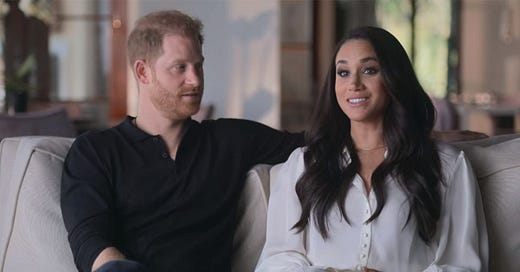



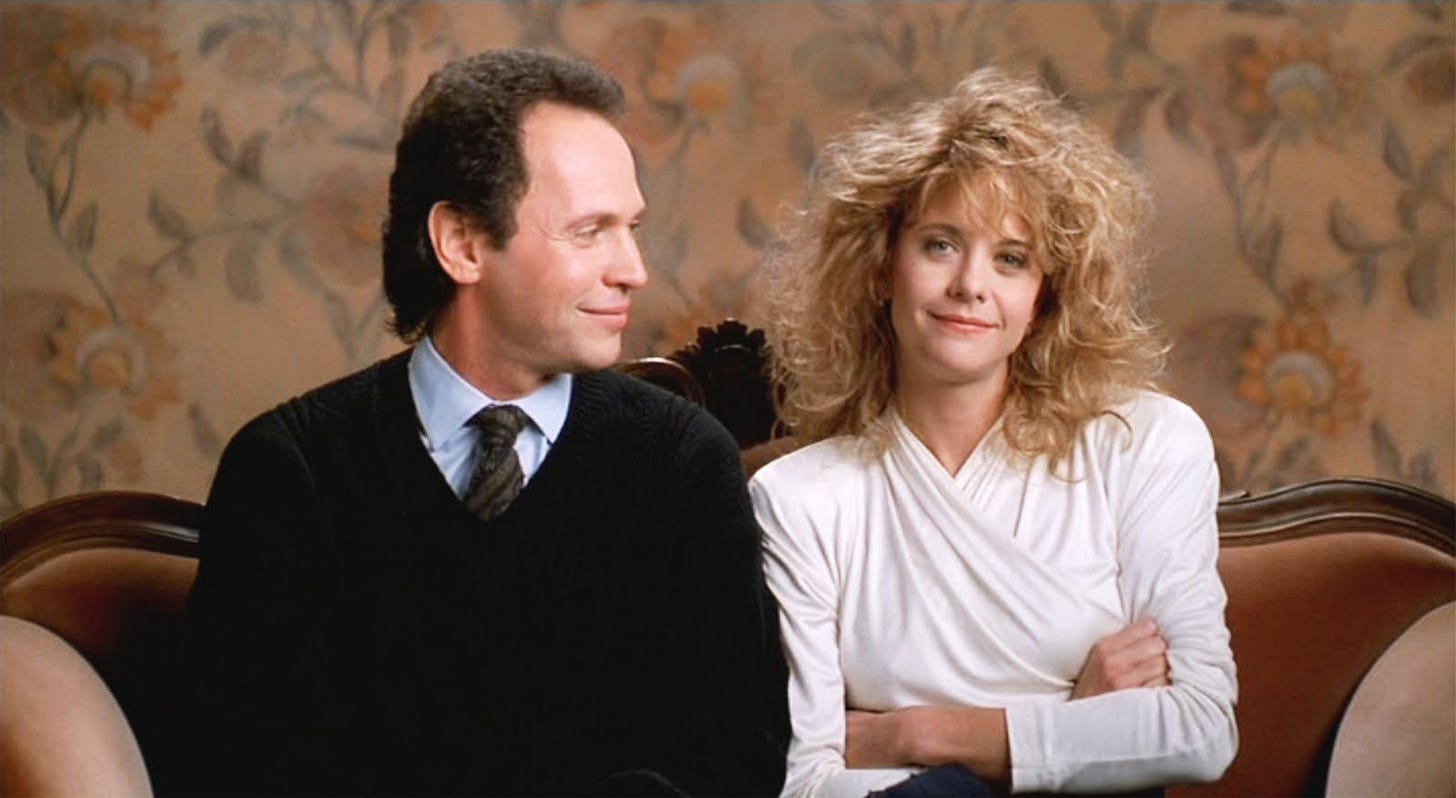
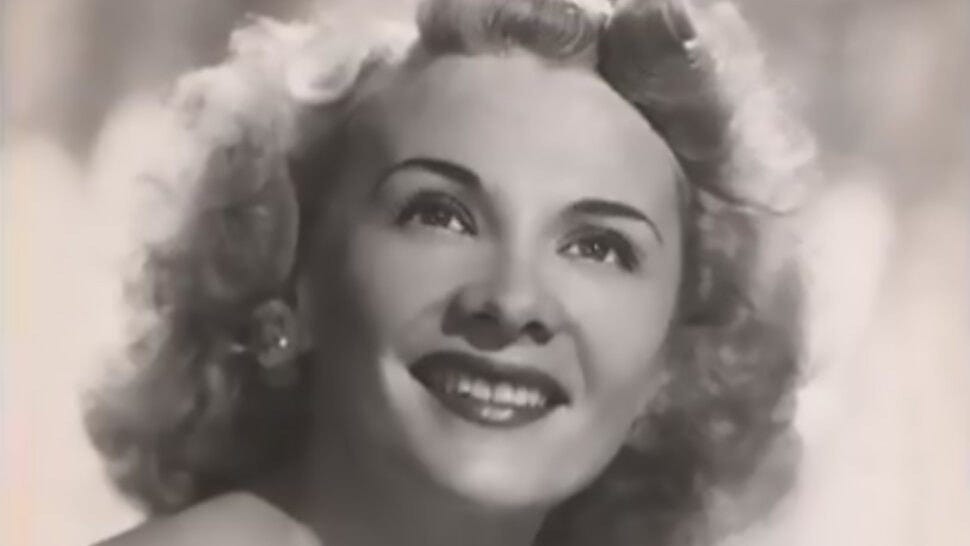
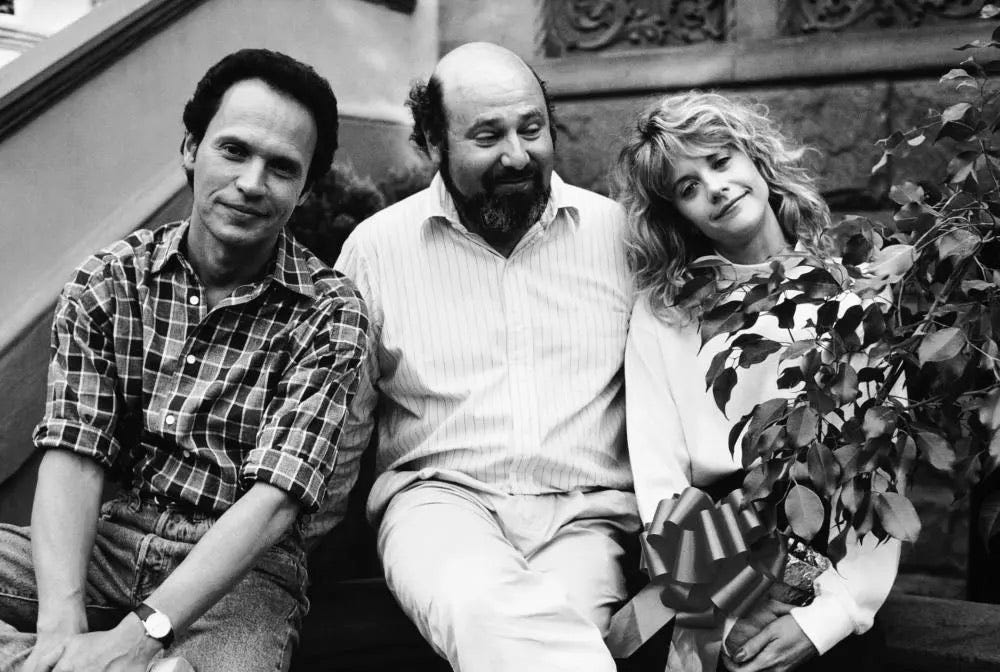
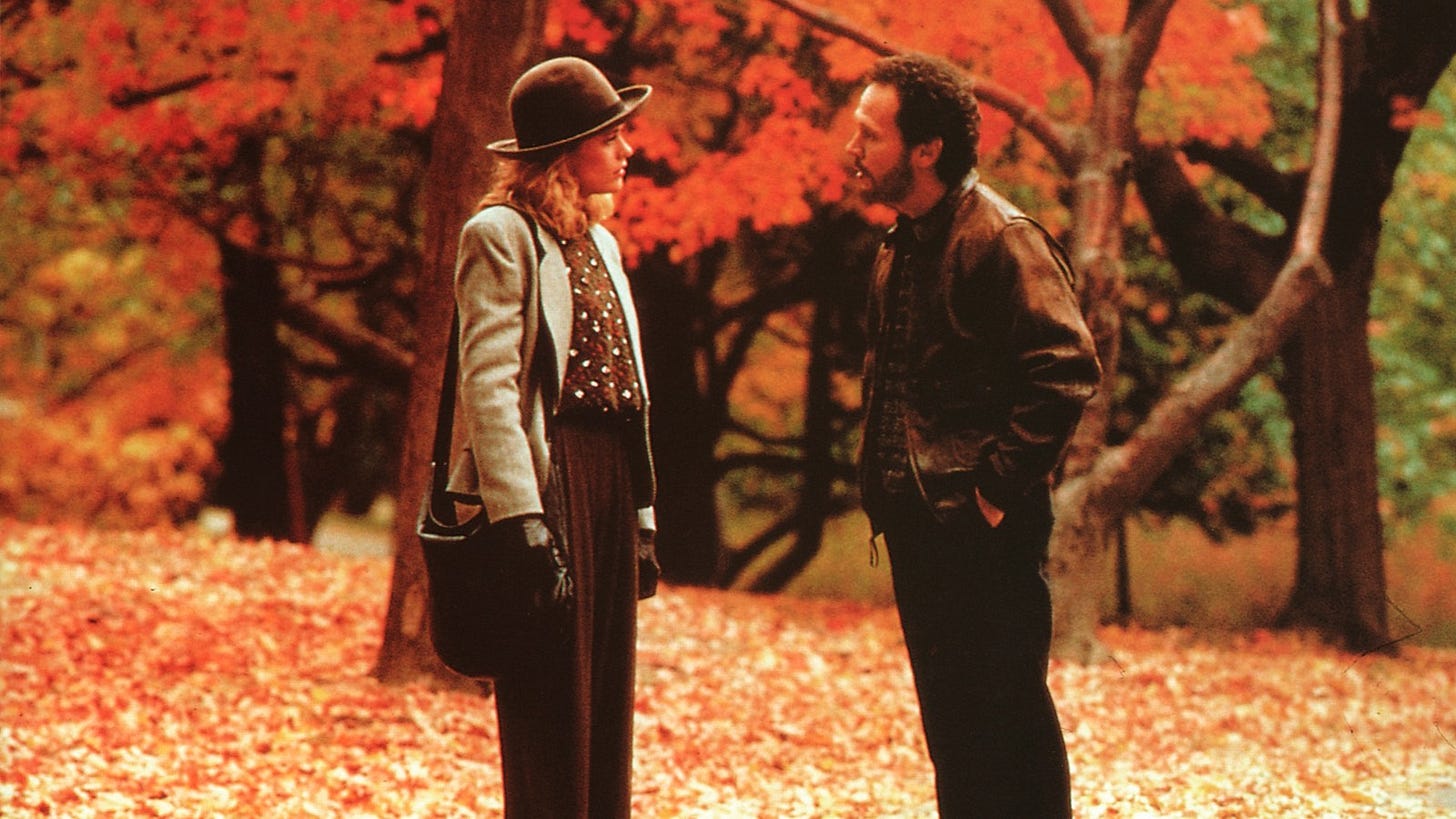
This was fabulous E! xos
After I watched H&M (riveting but ugh… those nicknames), I binged season 5 of The Crown. It was an emotional down spiral that led to eating too many Christmas cookies and questioning my life choices.
I loved the entire newsletter, especially the part about the funny voices as a sign of being in love. SO TRUE!! ❤️ Not everyone is worthy of your funny voice.